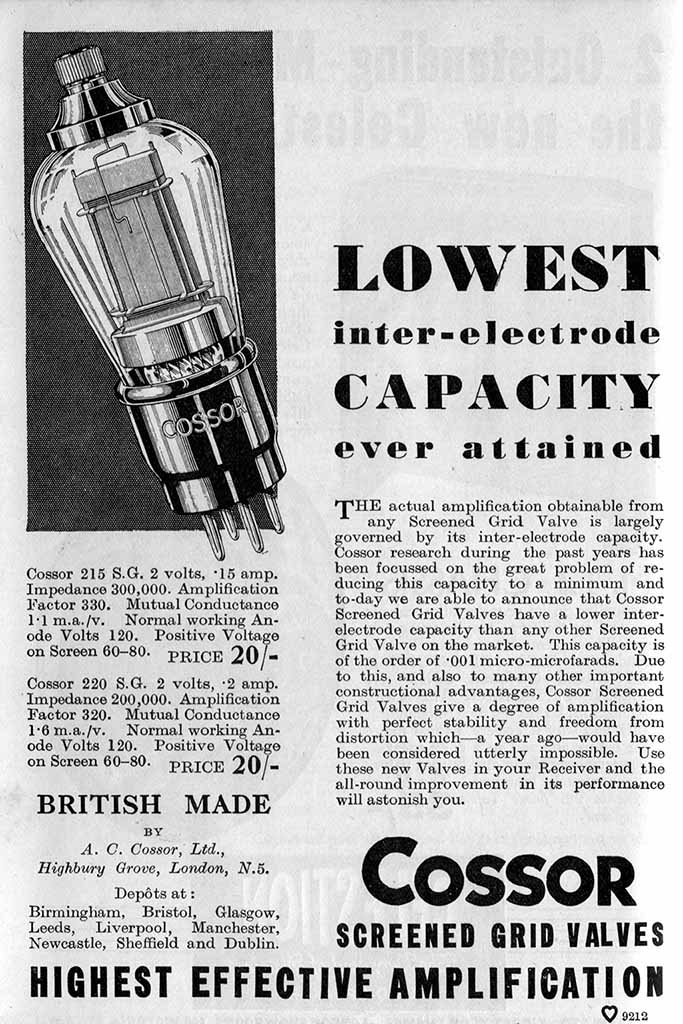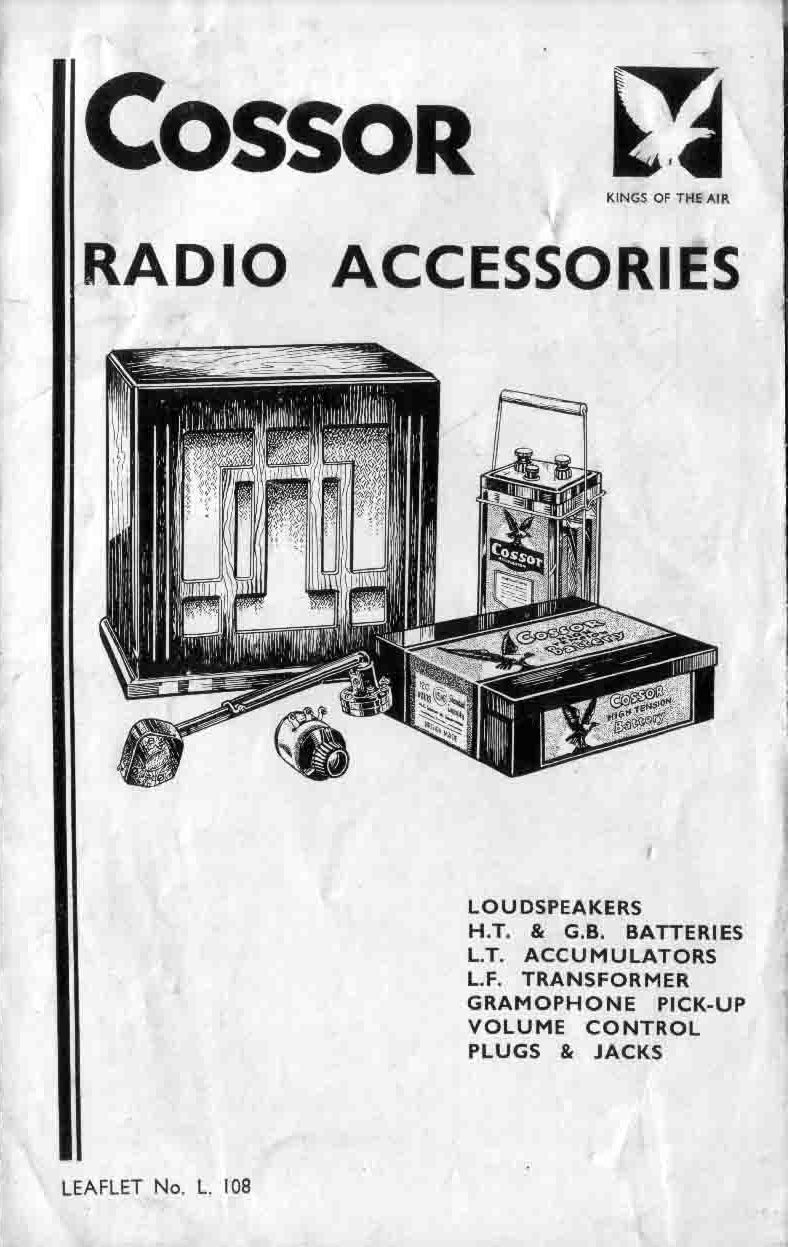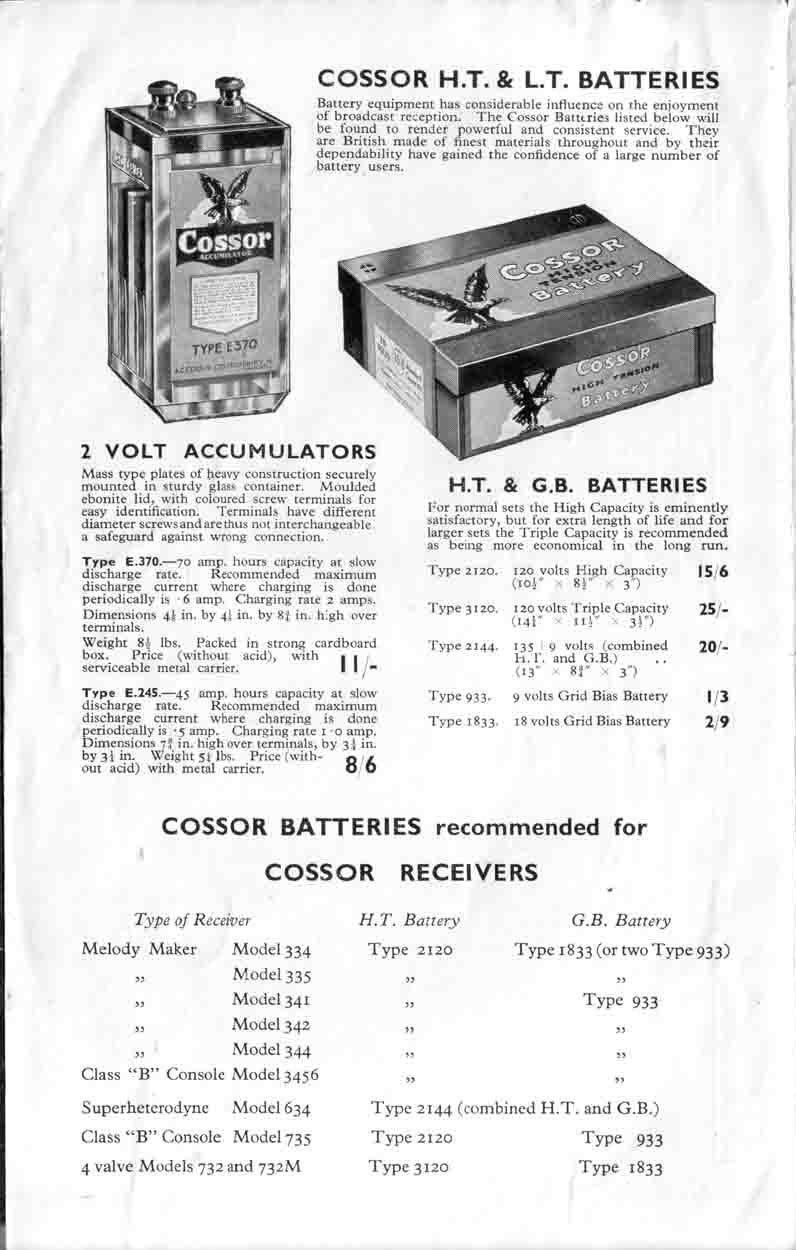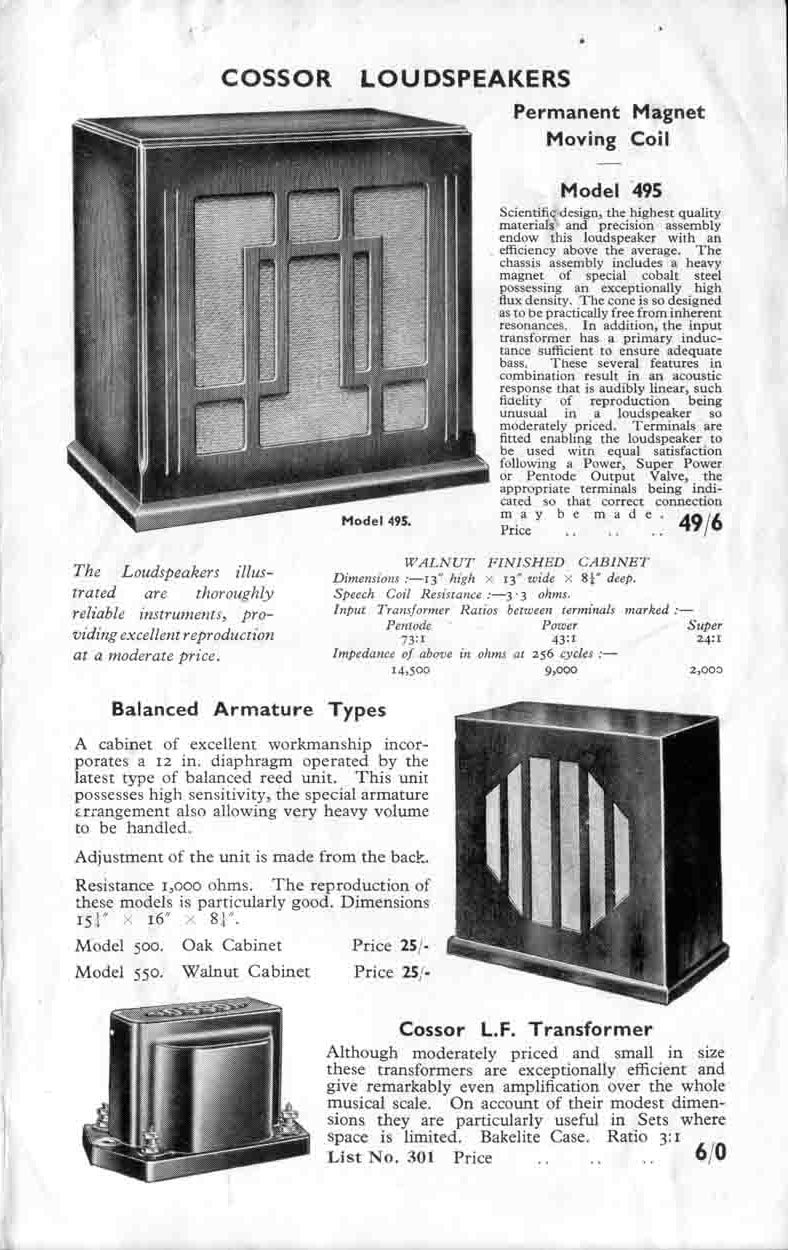|
A.C.Cossor can trace its roots
back to 1859, when it was founded long before radio was discovered.
They made thermometers and barometers, specialised electrical
glassware, to later include an early cathode ray tube, made in
1902 and "R" valves for use in the later years of WWI
at their first factory at Highbury, London.
In 1922, Cossor launched a radically new type of valve which
they designed in-house, establishing their name in the frontrunners
of radio. They went from strength to strength selling valves
and radios kits, diversifying to electronic instruments, including
an oscilloscope in 1932.
The company initially entered the business of manufacturing radio
sets by selling their products in kit form, adopting the slogan
"Kings of the Air", later manufacturing for sale, in
1930, their first complete model. The Highbury factory was continuously
developed until 1932 when they ran out of space, resulting in
a decision to build their second factory, at Leyton, where they
made radio cabinets from 1934

The advertisement above appeared in
the BBC Year book of 1932 and depicts Cossors latest valve developement.
The Wireless World Valve data manual (of the 60s) correctly lists
their claimed figure for anode grid capacitance. The figure was
indeed not attained by any of their competitors products and
I can only find an isolated example of the figure being bettered
and that by a late B7G example.
Their household radio set brand name
"Melody Maker" , introduced in 1927 for sets in kit
form, was continued for 30 years until the late 50s and the odd
example from my collection is shown elsewhere.
Cossor's first TV receiver was advertised before regular transmissions
had started, followed by a new receiver, demonstrated at the
1936 Radio Show. By 1938 they had the model 1210 using a 15 inch
tube, very large by standards of the day, giving a picture, from
which the model number was derived, of 12 inches by 10 inches.
By 1939 Cossor, in common with all other leading manufacturers
had joined the war effort, using their specific engineering expertise
to develop the radar receiver for the Chain Home UK Radar Defence
System. Their experience stood them in good stead, because after
WWII they continued successfully in the field of radar. Manufacture
of radio sets continued after the war with the number of different
models getting less and less and ending with the introduction
of tape recorders before the Cossor name petered out in the late
60s.
I have searched my information
for details of Cossor sets and come up with the list attached,
which is certainly not exhaustive. The way the sets were numbered
is obviously not straightforward as the number does not really
reflect the date of introduction. Also, most of Cossor's many
individual components were also numbered, often using the same
codes as finished sets. |







